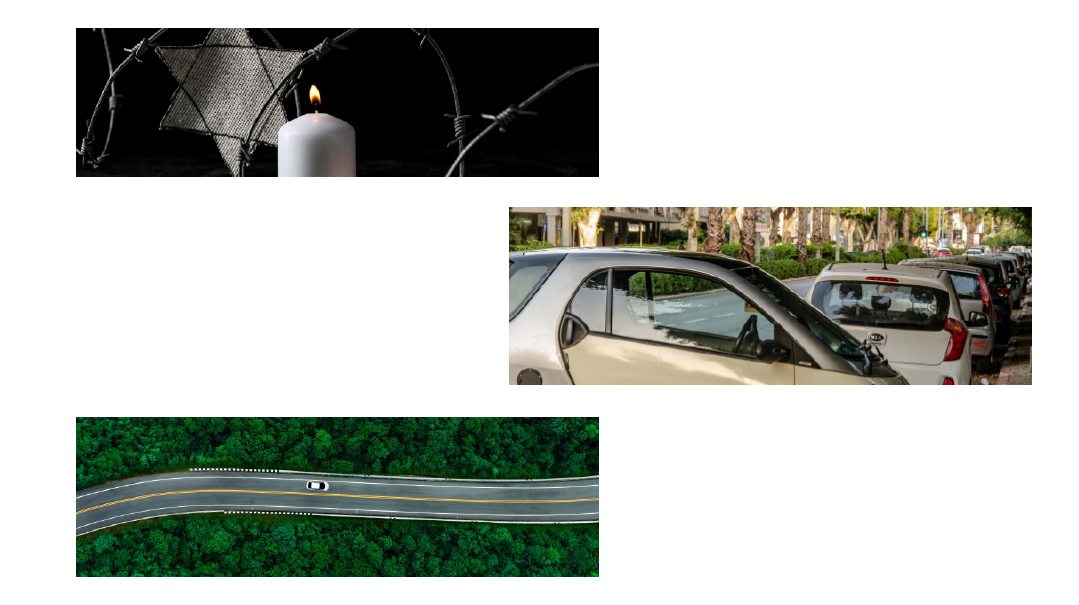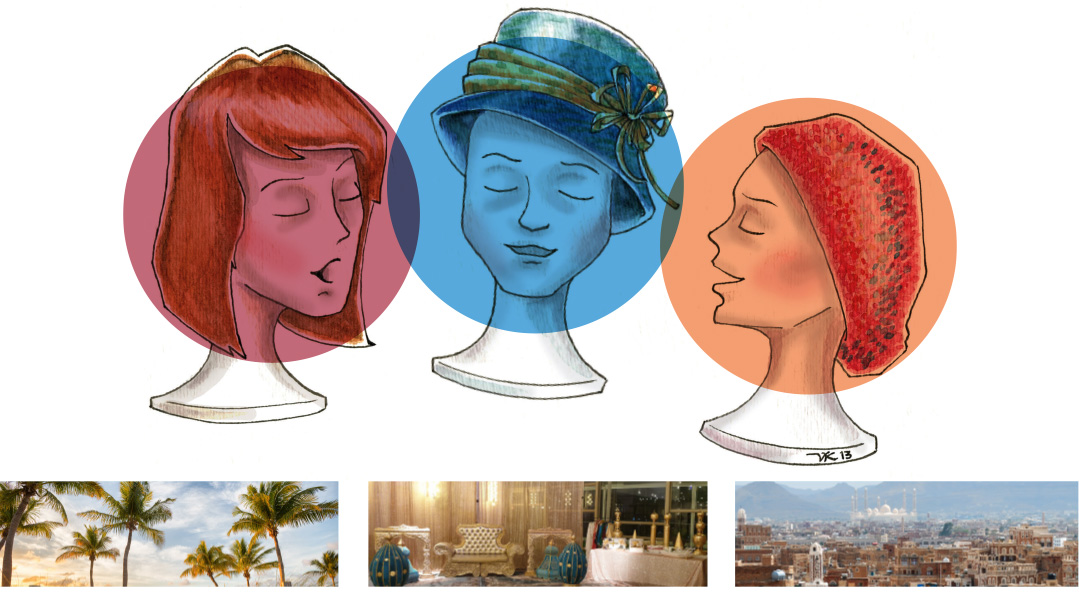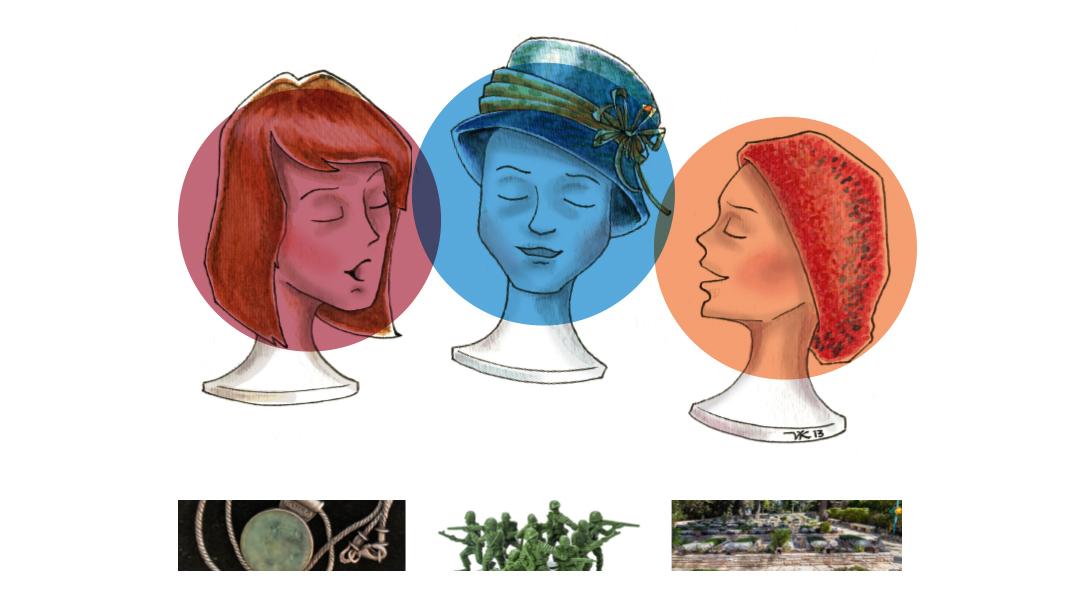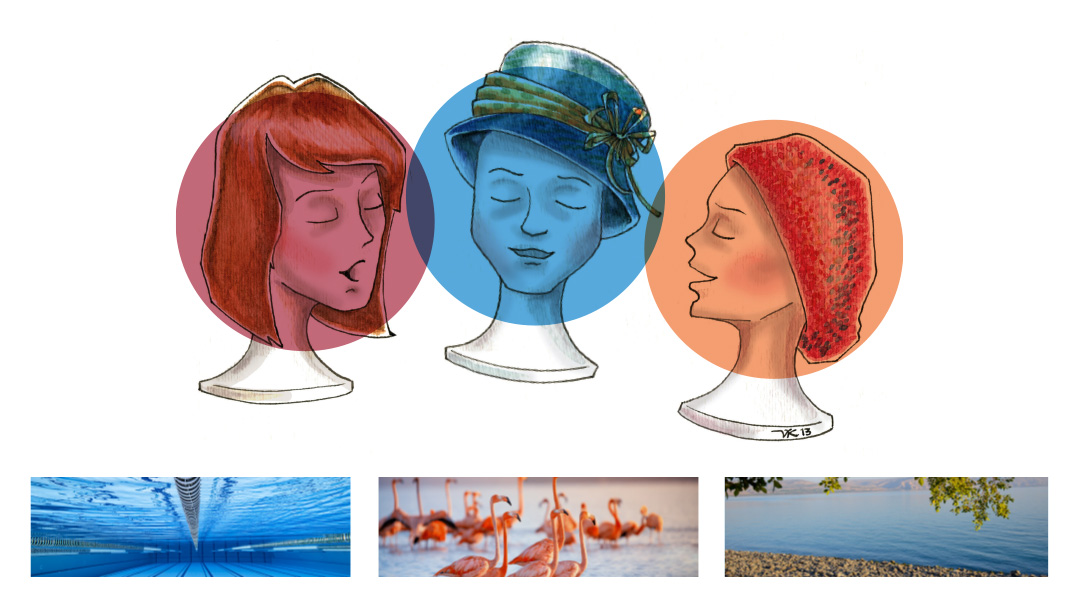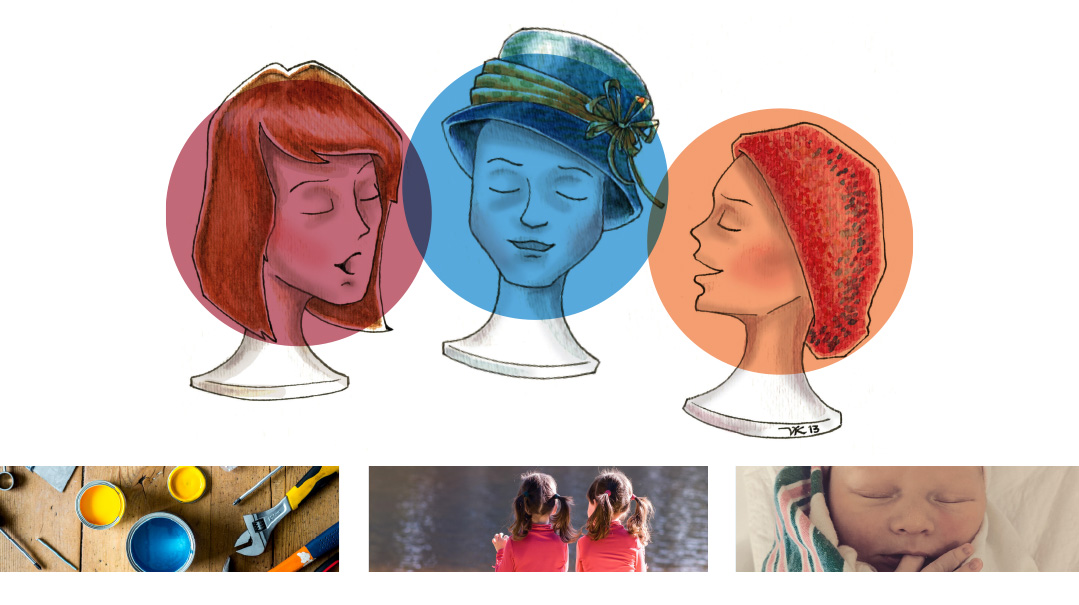It Takes a Village
| March 14, 2023Come with the wandering Sisters to discover “villages” in cities on three different continents
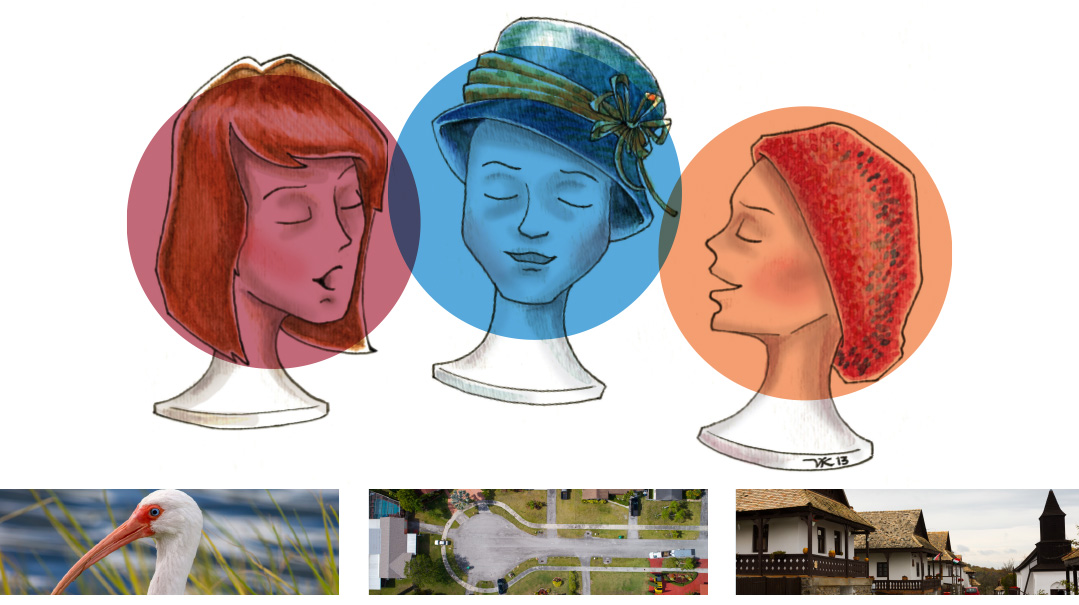
DO you live “in town” or “out of town”? For that matter, what makes something “in” or “out”? Is Baltimore, a three-hour ride from the center of the universe (calm down, we’re just kidding), “out” or “in”? What about L.A., Houston, Vegas? Where does Yerushalayim fit into this town paradigm?
And what, exactly, is a “town”?
It’s an amorphous, changeable concept, this in-and-out idea. When we were young, would you believe both Lakewood and Monsey were considered “out of town”? (And no, dinosaurs weren’t roaming the earth, and we didn’t have long, convivial chats with Avraham Avinu....)
Whether you live “in” or “out,” there’s one thing we’ll bet you’d say: I don’t live in a village.
Or do you?
Come with the wandering Sisters to discover “villages” in cities on three different continents. We’ll offer you a warm welcome, a cup of steaming coffee, and some insights into how you can live in a village, no matter where your home happens to be.
Marcia recounts...
A Tale of Two Villages
The condo kind of fell into my lap...
January 2020
I’m in South Florida for my grandson’s bar mitzvah. Sheldon a”h hasn’t even been gone for a year, and I feel his absence acutely. I decide to take an extra week of vacation from work. I ask a friend who’s “snowbirding” in Century Village if I can stay with her, just to see what all the talk’s about.
And wow… pools, pools everywhere! I drive around from pool to pool until I find an empty one where I can swim peacefully and contemplate the universe. I’m usually a lone swimmer — a “lapper, not a yapper,” in Stark Sister lingo — but, just to be sociable, I let my friend persuade me to join her at a water aerobics class. I’m in a huge pool surrounded by dozens of women, mostly in schvimkleids. The minute I mention I’m checking out the Village, shouts come from all directions:
“Shprintza Schwartz is about to put her condo on the market.”
“Goldeleh Goldberg is about to move.”
Before I know it, I’m checking out an apartment. It’s lovely. But, as I explain to the owner, it hasn’t even been a year yet. I’m not ready to make any major life decisions. “Talk to me in June,” I say. “If it’s still on the market, I might have a better idea of whether to take such a major step.”
One month later
My phone rings while I’m driving. It’s the condo owner.
“I’m about to list it, and the price will go way up. It’s fully furnished. You don’t even have to move in right away because it’s got tenants who’ve signed a one-year lease,” she says.
In that instant, it hits me: Hashem is sending me this opportunity. Seize it.
I hire a lawyer, put down a deposit, and agree to a June closing.
March 2020
Just days before Sheldon’s first yahrtzeit, the world shuts down. Among my many fears about the rapidly spreading pandemic, I’m gripped with this thought: Is this the best time or the worst time in the history of real estate to buy a condo – especially for a woman alone?
Other fears surface. What can I be thinking! I live in a “village of chessed” — Silver Spring’s White Oak community — where people look out for one another. How can I leave my dear friends, even for a few months a year? Why go to a new place? Why start making new friends?
I can still pull out of this deal!
But… It’s an opportunity from Hashem. Go ahead. Just do it.
So I do it.
January 2023
Some people call it a lanai. Some call it a Florida room. Brooklynites would call it a screened-in porch. I call it my shtickel Gan Eden. It overlooks a lake with lush greenery on either side, and from there, various species of exotic birds entertain me with their avian dramas, particularly the snow-white ibis.
All day, a flock of many hundreds roam the village lawns. Then before sunset, like clockwork, they line up below me, right on “my” lawn, the lakeshore, forming two militarily precise rows. A few “scouts” fly across the lake to check out the trees in the wooded area on the other side. They fly back to report.
I imagine their conversations. “Faigie, you can hold court on the easternmost trees.” “Tzipporah, your family will just love the trees on the west side.” “Yonah, your clan can take the middle. Just watch out for the iguanas.”
Then, as if signaled by an unseen flight controller, they fly across the lake. The singles fly one by one; the couples, two by two. As the sun starts to set, the last stragglers — probably the teens pushing their curfew limit — join the flock to nestle comfortably in their chosen leafy branches.
Soon the greenery across the lake seems dotted with snow.
Watching this drama unfold, it occurs to me: They’re snowbirds, like me! They fly back and forth between their two villages!
Now I know I made the right decision. Not only do I have comfortable homes in two “villages” — this one has bird shows. And new friends. And pools.
Emmy Leah pays tribute to…
Village Life
I’m writing this Schmooze on a Thursday morning, between coughs and sneezes. I’ve been nursing a miserable cold all week long, and a deadline looms.
That’s the bad news. The good news? I managed a full night’s sleep yesterday for the first time in days — thanks to my neighbor Hadas, who, hearing I wasn’t feeling well, raced over with cold medicine and hot chicken soup.
GoogleMaps calls the cul-de-sac where we live HaShitah Street. In our larger, mixed Israeli/Anglo Beit Shemesh neighborhood, we’re known as “Kibbutz” HaShitah. But even after 30-plus years in Eretz Yisrael, baruch Hashem, most of them on HaShitah, I still think mostly in English.
Bruchim habaim to Rechov HaShitah. In English… welcome to my Village.
So what makes our village… a village? Start with small things: Friday-afternoon-all-the-stores-are-closed-borrowings, from A (one of my apples is moldy and I’m working on a cobbler!) to Z (anybody have extra zucchini for the soup?).
Beans, anyone? I once needed a can, went to fellow villager Karen to borrow one. Oh, no, her family only uses dry beans… but from then on, Karen stocked a few cans, in case I ever needed some.
Refrigerator not cold? Dryer not drying? I’ll call the appliance repairman — but first, I’ll call neighbors to store the milk or dry the dripping clothing. And if the wet outfit is my son’s army uniform, as happened years ago, my fellow-villager won’t just dry it — she’ll sew up a hole, iron it, and bring it back starched and folded!
Then there are the life-cycle events: My son Yitzchak (years before he became the soldier wearing the ironed-and-starched uniform) was the first baby born in the village, shortly after we moved in. No shul halls built yet in the area, so we had his bris in my living room. Last minute, the mohel pointed out that our chairs were unsteady — and new neighbor Nomi, whose furniture was less “vintage” than ours, raced to her dining room and returned with a kisei shel Eliyahu that wasn’t a rocking chair. And the seudah? Celebrated on the as-yet-unpaved street, catered by our new neighbors.
In the years that followed, baruch Hashem many babies were born to our village — including Netanel, who entered the world on the living room floor of his Rechov HaShitah house, with me and neighbor Katie serving as midwives and Tsvi, our village doctor — a geriatrician, no less! — as attending physician.
It takes a village to raise children together — and then, years later, to start marrying them off. When it comes to dressing elegantly, frankly, I’m the “village idiot.” But no worries — my well-dressed fellow villagers decked me out before each of my children’s weddings. That included lending me a dress, combing my (rarely worn) sheitel, re-doing the awful job the makeup lady had done, bringing me a dozen pairs of shoes to try on when they decided my sensible, flat Shabbos shoes wouldn’t do… and finally, popping a pair of single-use contact lenses into my eyes so I wouldn’t march down to the chuppah wearing glasses.
When we first came to our village, there wasn’t a flower or leaf to be seen. In our first years, we planted three of the Shivas Haminim: fig, pomegranate, and olive. Over the years we’ve created a virtual botanical garden in the center of the street, planted and cared for by the villagers. A kind of “village green,” with an Israeli accent.
Now, decades later, some of the original village settlers have left. Our houses are big, challenging to maintain, with loads of steps to climb. We’ve coined a new village saying: “Once a Shitan, always a Shitan.” We try to stay in touch. And we rejoice in new families who’ve moved in, continuing traditions, starting new ones, keeping the village vibrant.
Occasionally, I also think about downsizing, moving to a more easy-to-maintain apartment. But then my grandchildren come and play with the other grandchildren and the new generation of village children, or we organize another communal Seudah Shlishis, or someone puts in a new planter in our community garden….
Nobody knows what the future holds, but for now, b’ezras Hashem, I’m staying in the village.
Because, who knows, I might need to borrow a can of beans.
Miriam considers….
To Visit? Or Not To Visit?
Dear Marcia and Emmy Leah,
We’ve discussed it. Argued (civilly, and vocally, of course!) about it. But still, we disagree on whether or not to visit the place where our mother was born, where she spent a happy childhood. The place that flung her and her family out with brutal cruelty.
Munkacs.
The question is moot nowadays. Our mother’s birthplace is currently under Ukrainian rule: not exactly a popular tourist destination. But when war’s madness ends, inevitably discussion will resume.
So here’s why I want to walk the streets where our mother grew up:
A caveat: Mommy wouldn’t be happy if she knew I was writing about Munkacs in a Schmooze whose theme is “villages.” Munkacs, she always told us proudly, was no “dorf” (village), but a vibrant city, a metropolis that boasted a prewar population of 21,000, over 30 shuls, and — yes! — its very own traffic light. A city indeed.
Our mother’s memories, though, were centered around what was known as “de Yiddishe Gasse — The Jewish Street” where she lived. Not a village in the legal sense, “de Yiddishe Gasse” was a close-knit, caring place, a Jewish village unto itself.
Mommy was fortunate to have been born when her town (oops, city) was governed by the liberal Czechoslovakian government. So liberal that her address, which under the Hungarians was called Latorica 25, was changed to Darkei Teshuvah Ulice (Street), named for a yeshivah not far from her home.
Her grandfather, known as Avruhum Beketshe Schneider (Avraham, the tailor who manufactures beketshes), owned a home made up of many apartments around a shared courtyard. He gave every child who got married an apartment; Mommy grew up surrounded by grandparents, aunts, uncles, and cousins. Mommy got her love for swimming — which she passed on to us — in a secluded area of the nearby Latorica River, where the women would bathe. She would deliver baskets of food her mother had prepared for the needy, going early in the morning when most people were still asleep so the recipients shouldn’t feel embarrassed lest they see her. And she’d often accompany her grandfather to see his newly hatched baby chickens.
It was in Munkacs that she met her first husband, Yossi, Hy”d, marrying him on a Friday afternoon with the “tziganerz” (gypsies) playing music at their chuppah, and the “gantze Yiddishe Gasse” — the entire street celebrating.
Of course, there was hard work. Her father, following her grandfather into the “Beketshe Schneider” business, took vacation only twice a year — on Chol Hamoed. Days began at sunup and ended many hours later. Laundry was washed in the nearby river — my mother’s cousin, Mrs. Chovie Weiss shetichyeh ad 120, who also grew up in the courtyard, remembers bringing cups of warmed water to the washerwoman in the frigid European winter, so she could warm her frozen hands.
But there were also joyous events. When a nephew of my mother’s had his bris, the Munkacer Rebbe, Rav Chayim Luzer Shapiro, came to my grandfather’s house. “I never in my life saw my father so happy,” my mother told me. And when my mother’s brother, Hershy, was born — an only son among six daughters — “they were dancing on the tables.”
There was, unfortunately, also plenty of machlokes — between Zionists and chassidim, between socialists and capitalists, even among chassidic groups themselves. And yet, as an author wrote about his hometown: “Despite the arguments and the essential differences… from a religious, nationalist, Zionist, and socialist point of view… Munkacs was… a treasure in everyone’s heart.” (Peretz Litmann, The Boy from Munkacs: The Story of a Survivor)
Yes, that “treasure” was destroyed in an unspeakably cruel way. But the streets, though undoubtedly changed, are still there. The Latorica River still flows. The graveyard where our great-grandparents were buried, though desecrated, still remains.
So, Marcia and Emmy Leah — we want to walk metaphorically in our mother’s footsteps, emulating her strength, compassion, and wisdom. But wouldn’t it be remarkable to also walk in the physical footsteps of our mother when she was young?
And that’s why I want to walk the streets where our mother grew up.
Dear Miriam,
Sorry — not convinced. Mommy never wanted to return — should we? But if you go — we’ll go too, to keep an eye on you. That — Mommy would want.
Love, Marcia and Emmy Leah
(Originally featured in Family First, Issue 835)
Oops! We could not locate your form.


